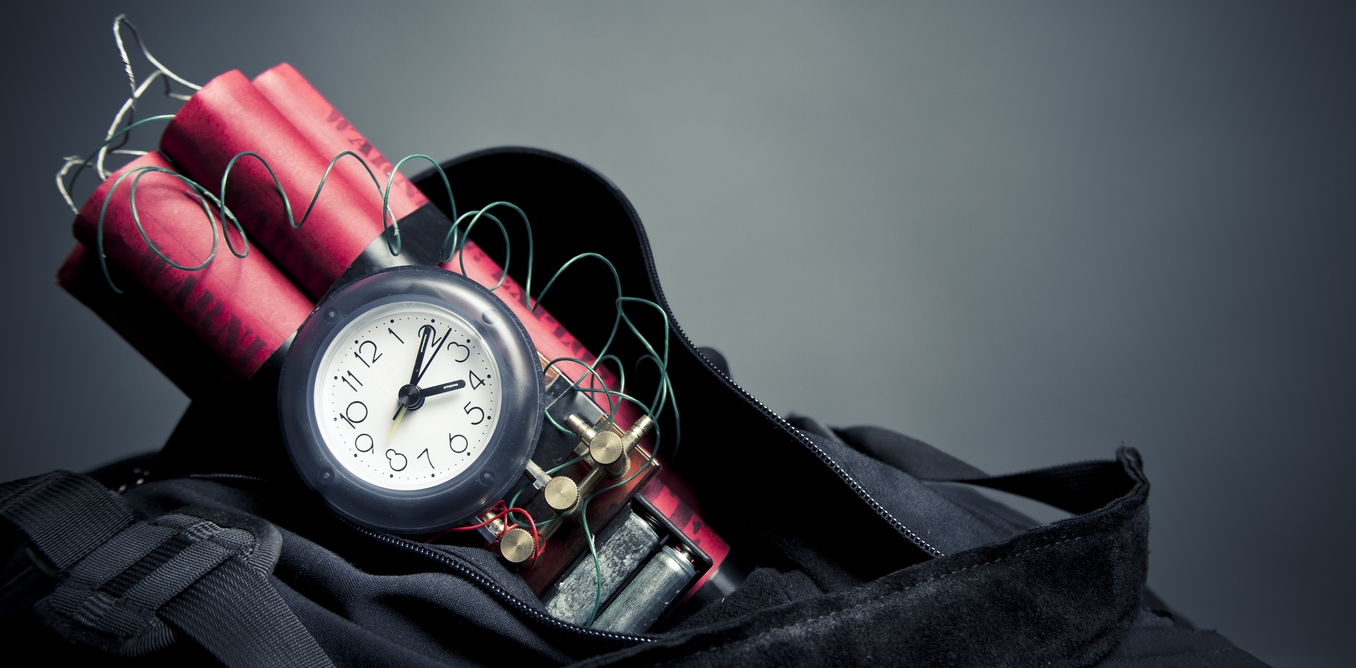
Bomb Threat
A bomb threat is defined as “information received indicating that a bomb or explosive device has been placed or is actually in or on the premises,” not that one is going to or will be placed on premises.
If the threat is received by mail or tape recording, it is evidence and should be handled as little as possible. Immediately call your Senior Security representative.
If the threat is received by phone, listen for, and note the following information, then immediately call your Senior Security representative after the call.
Be Prepared
If you receive a bomb threat by telephone, remember these guidelines:
-
- Remain calm; do not be intimidated by the caller. The person taking the call should immediately notify another staff person in the office while the caller is on the line.
- Obtain as much information as possible. Do not put the caller on hold. Do not attempt to transfer the call.
- Ask questions if the caller does not volunteer specific information:
- Who is calling?
- Where are you calling from?
- When is the bomb going to explode?
- Where is the bomb located?
- What kind of bomb is it?
- What does it look like?
- Who placed the bomb?
- Why was the bomb placed?
- Pay attention to the caller and his/her words:
- Note the date, time, and duration of the call.
- Note whether the caller asked for or identified a specific person or company name.
- Does the caller have distinguishing voice characteristics such as an accent, stuttering, or mispronunciation?
- Note the caller’s demeanor: Is the caller angry, nervous, excited, scared, irrational, or agitated?
- Is the caller a male or female, young, middle-aged, or old?
- Note whether the voice sounds familiar.
- If you have caller ID, note the phone number of the caller.
- Listen for background noises (traffic, train whistle, music, television, etc.) or voices.
- Document all that you know and hear.
- Call 911, local police, or local security from a different phone.
Suspicious Packages
Suspicious packages are any items capable of concealing or containing harmful substances left unattended and/or visibly showing indicators of posing a potential threat.
Characteristics of Suspicious Packages
-
- Excessive postage
- Handwritten or poorly typed addresses
- Misspellings of common words
- A strange return address or no return address
- Incorrect titles or titles without a name
- Not addressed to a specific person
- Marked with restrictions, such as “Personal,” “Confidential,” or “Do not x-ray.”
- Marked with any threatening language
- Postmarked from a city or state that does not match the return address.
Key Appearances
-
- Oily stains
- Discolorations
- Odor
- Excessive packaging material
- Excessive weight
- Ticking sound and/or protruding wires or aluminum foil
- Additionally, items such as a briefcase, gym bag, suitcase, etc. may be deemed suspicious solely because it is discovered unattended in a public place or near a sensitive facility.
What to Do with a Suspicious Package, Letter or Container
-
- Do not panic. It is essential for all your actions to be careful and deliberate.
- Protect yourself and others from exposure to an unknown material. Do not touch, move, or attempt to clean up the unknown material.
- Isolate the area and evacuate all personnel from the immediate area.
- Contact law enforcement and your supervisor as soon as possible.
- Do not use radios or cell phones.
- All personnel who may have had contact with the unknown material should wash their hands with soap and warm water and shower with soap and warm water as soon as possible.
- Do not use bleach or other disinfectants.
- Make a list of names and contact information for all personnel who have come into contact with the unknown materials.
- Provide this information to law enforcement and health officials.
- Carefully follow the instructions provided by law enforcement and health officials.

